In the summer of 2010, as U.S. agents dug into allegations that a powerful drug mafia had poured money into Mexican politics, the investigators took direct aim at the man who is now the country’s president, Andrés Manuel López Obrador.
According to confidential government documents obtained by ProPublica, the Drug Enforcement Administration knowingly risked a political furor to try to penetrate López Obrador’s campaign organization before Mexicans could elect a government that might be beholden to the traffickers.
From the start, the documents indicate, the Americans’ primary target was López Obrador, then the leader of the leftist Democratic Revolutionary Party, or PRD, and the front-runner in the 2012 presidential race.
“Should this investigation yield the evidence suggested by the multiple cooperating witnesses, the DEA will seek to indict AMLO and members of his staff and political party,” one Justice Department document states, referring to López Obrador by his initials.
“Thus, this investigation could ultimately affect who runs for president from the PRD party.” The candidate’s possible indictment in the United States, the document adds drily, “would certainly create media attention.”
The investigators initially had remarkable success, co-opting a midlevel campaign operative to act as a DEA mole inside López Obrador’s political team. They then drew up an audacious plan for a sting operation in which an undercover operative would offer the campaign millions of dollars in exchange for future protection, the documents show.
But that plan never went forward. The inquiry was shut down by senior Justice Department officials in late 2011, as the attorney general, Eric Holder, came under heavy political fire for the failure of another undercover operation in Mexico, a gun-tracking effort known as the “Fast and Furious” case.
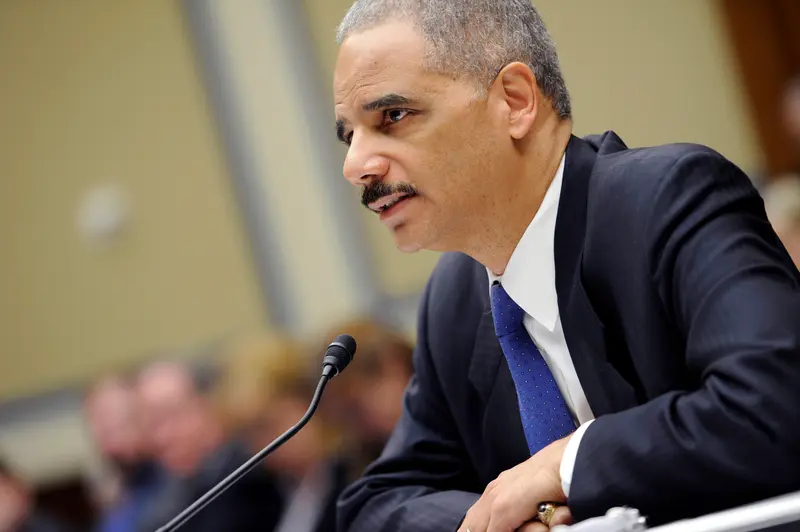
Credit:
Chris Maddaloni/CQ Roll Call/Getty Images
That decision effectively ended U.S. law enforcement scrutiny of the matter, even as the extradition of major Mexican drug traffickers to the United States brought investigators new allegations about drug ties to López Obrador’s political apparatus in the years that followed.
The disclosure of the DEA’s investigation this year by ProPublica and two other news organizations jolted U.S.-Mexico relations and enraged López Obrador, who denied ever taking drug money and went on a weekslong tirade against the DEA, ProPublica and others he said were conspiring against him.
“It’s that the DEA no longer likes the policies we are applying because we are an independent and sovereign country,” López Obrador said last month, alluding to his repudiation of the closer antidrug cooperation of earlier Mexican governments with Washington.
The president’s spokesperson, Jesús Ramírez Cuevas, said López Obrador would not respond to questions about “false allegations” related to the 2006 campaign. But in a letter, he said the president wanted answers to his own questions about ProPublica’s sources and motives in reporting on the DEA inquiry. “Your reporting has damaged the image of the government and the president of Mexico,” the letter added.
Biden administration officials have sought to pacify López Obrador, on whom they are relying to hold back the flow of migrants trying to reach the U.S. southern border. While not denying reports of the DEA investigation, the officials emphasized that it has long been closed and the Mexican president is no longer under investigation.
Still, the revelations again raised a question that has long troubled U.S. officials working on Mexico: How should they deal with evidence of high-level corruption in an allied government that is steadily losing ground to some of the world’s most powerful criminals?
The documents obtained by ProPublica, which have not been previously disclosed, illuminate how U.S. officials initially weighed that question at a high point in their law enforcement relationship with Mexico and help to clarify why, after the political winds shifted, Justice Department officials halted the investigation before agents had come close to finishing their work.
The documents point to some uncertainties of the case, which began with allegations that traffickers had funneled some $2 million into López Obrador’s first presidential campaign, in 2006. (López Obrador lost that race and the one in 2012 before being elected president in 2018.) Although U.S. agents did ultimately corroborate that account with at least five different sources, they never developed any firsthand confirmation that López Obrador himself approved or even knew of the reported donations, officials said.
The DEA’s investigation of drug traffickers’ links to López Obrador’s campaign began with Roberto López Nájera, a young Acapulco lawyer who went to work for one of Mexico’s more notorious drug bosses, Edgar Valdez Villareal, a Texas-born trafficker known as “La Barbie.”
When López Nájera joined La Barbie’s gang in 2004, it was effectively a branch of the drug organization led by the kingpin Arturo Beltrán Leyva — who was in turn one of several leading figures in the trafficking syndicate known as the Sinaloa Cartel. The alliance was fluid enough, López Nájera later told investigators, that gang leaders sometimes gathered their gunmen for meet-and-greets, lest they encounter one another on the street and mistakenly start shooting.
López Nájera eventually turned on La Barbie and made his way to the U.S. Embassy in Mexico City, where he offered his help to the DEA. He was moved into protective custody in the United States and became a prized informant, sitting for endless debriefings and even typing up reminiscences of traffickers he had known and episodes he had witnessed.
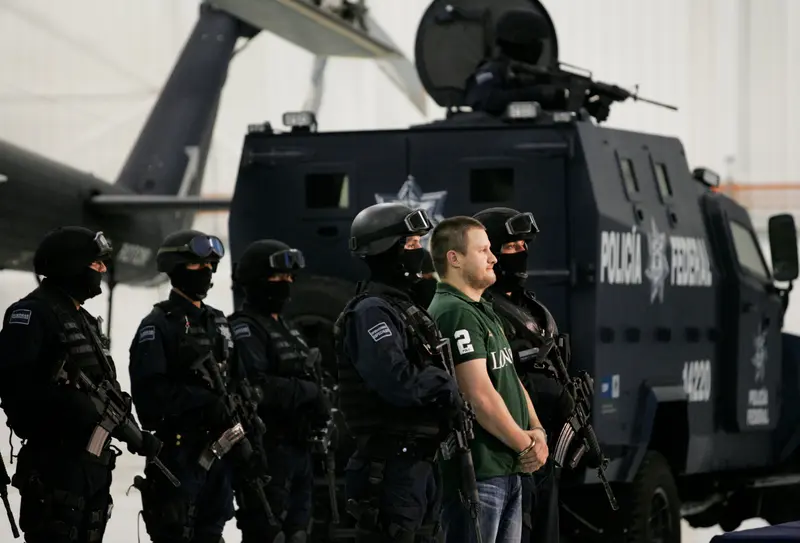
Credit:
Daniel Aguilar/Getty Images
Despite López Nájera’s acknowledged role as a bribe-payer, it took the DEA almost two years to start digging into his account of a January 2006 gathering at which he said La Barbie and two of his key lieutenants met emissaries from López Obrador’s then-surging presidential campaign.
As López Nájera told the story, officials said, the meeting at a hotel in the Pacific Coast resort of Nuevo Vallarta ended with a handshake agreement: In return for some $2 million he donated to López Obrador’s campaign, La Barbie was promised official protection if the candidate won, including a say in the choice of key police commanders and even the federal attorney general.
In the first months of the investigation, López Nájera worked with the DEA to set up meetings in Florida and Texas with Mauricio Soto Caballero, an operative from López Obrador’s campaign team with whom he had arranged the delivery of La Barbie’s contributions in 2006. The two men remained friendly, and López Nájera told agents that Soto had expressed an interest in making some quick money by perhaps acting as an investor on smaller drug deals.
On the night of Oct. 21, 2010, Soto met at a bar in McAllen, Texas, with a couple of men he thought were associates of López Nájera’s. In fact, the men were undercover DEA agents, and they arrested Soto at his hotel hours later. Within days, officials said, he pleaded guilty in New York to a single federal charge of conspiring to traffic cocaine. To avoid prison and return home, he agreed to help the investigators pursue others who had been involved with the traffickers’ donations to López Obrador’s campaign.
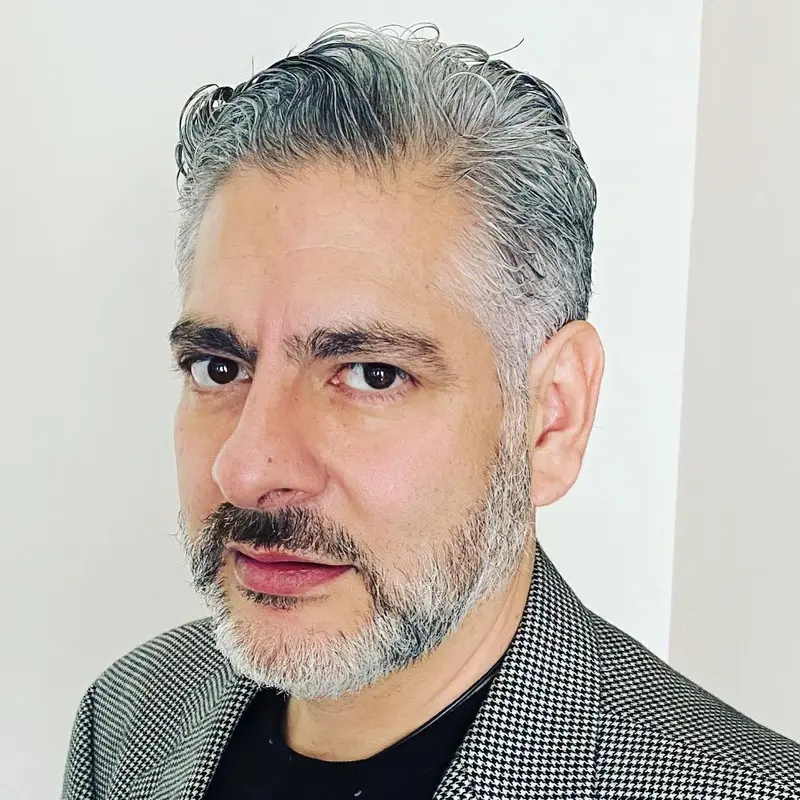
Credit:
Facebook
The agents, drawn from DEA teams in Mexico City and New York, submitted a “sensitive investigative activity” request to the DEA’s global operations chief, seeking authorization to use Soto as an undercover source. In essence, they were asking to plant an informant inside López Obrador’s second presidential campaign in 2012 and potentially develop evidence against the candidate himself.
“Without a confidential source in this position, it would be impossible for any entity to identify the level of corruption involved with a presidential campaign,” one undated document states. Soto “will be in a direct position to tell when a Drug Cartel provided monies to the campaign.”
“The ultimate target of this investigation,” the request adds, “is Andres Manuel LÓPEZ-Obrador.”
A list of other campaign staff members whom the agents intended to examine, included in a separate document, names two of López Obrador’s former bodyguards from the 2006 campaign and the one-star army general who headed the security team, Audomaro Martínez, now the powerful head of Mexico’s state intelligence agency.
According to several current and former officials familiar with the case, the agents had different criteria for choosing their targets for scrutiny. One former bodyguard, Silvio Hernández Soto, had been introduced to López Nájera as a contact who might prove helpful with his cocaine-smuggling efforts. Martínez, who supervised the bodyguards, was viewed as a gatekeeper to the candidate but does not appear to have been implicated in any criminal activity. (An attorney for Hernández did not respond to messages seeking comment, while Martínez did not respond to questions submitted to the president’s spokesperson.)
The agents’ first focus of attention was Mauricio Soto’s friend and former boss on the 2006 campaign, Nicolás Mollinedo Bastar, who remained one of López Obrador’s closest aides. Mollinedo had served as the campaign’s logistics chief, responsible for setting up rallies and other events around the country. In an interview, Mollinedo denied that he or the campaign ever took drug money. Soto, who did not respond to numerous requests for comment, has insisted to Mexican journalists that he was never arrested in the United States or collaborated with the DEA. (ProPublica has reviewed six U.S. government documents that state otherwise.)
Throughout the 2006 race, Soto told the U.S. investigators, he and other campaign workers would be approached by “unidentified individuals” offering “cash or high value items,” according to a document that summarizes some of Soto’s interviews. “It was understood that these individuals represented the local drug cartel and in return would request security for their organization to traffic narcotics to the United States.”
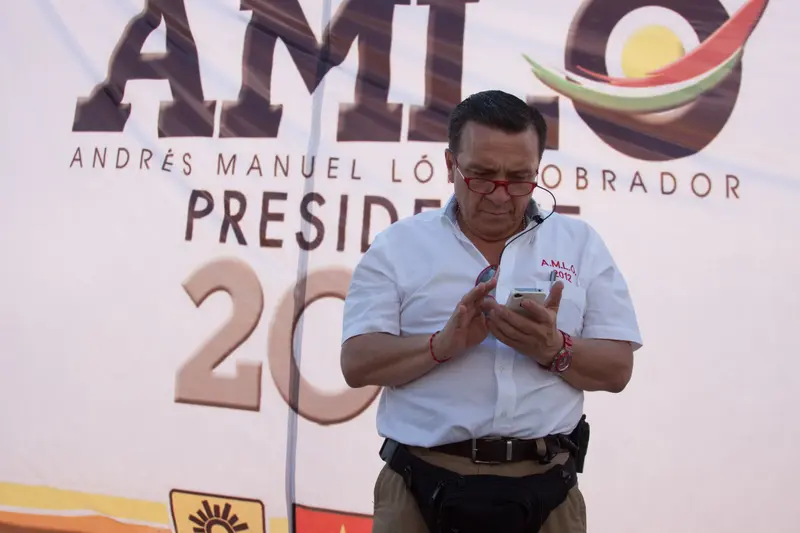
Credit:
Iván Stephens/Cuartoscuro
“Although at first MOLLINEDO directed his subordinates not to accept these offers, SOTO-Caballero was instructed to maintain a relationship with these individuals should they need anything in the future,” the document continues. That role continued, another summary of the investigation states, when Mollinedo authorized Soto “to receive the illicit funds and other support” that La Barbie sent to the campaign.
Soto told the investigators he discussed the Sinaloa contributions only with Mollinedo, to whom he turned over two large deposits of the traffickers’ cash, former officials familiar with the case said. The agents suspected that López Obrador, who had a reputation as a micromanager, could not have been unaware of such a large donation. But Soto told them he did not know if the candidate discussed the money with Mollinedo, one of his most trusted aides, or with the two businessmen who had claimed to represent his campaign at the meeting in Nuevo Vallarta.
López Nájera had told the investigators he had been introduced to López Obrador during a 2006 campaign stop in the northern state of Coahuila, where the candidate spoke to a huge crowd assembled with financial help from La Barbie.
López Nájera said he called La Barbie and handed his cellphone to López Obrador, who then thanked the trafficker for his donations. But officials familiar with the case said agents treated that claim skeptically: Even if López Obrador knew who was on the phone, whatever López Nájera thought he heard of the conversation would be hearsay. (López Obrador has said he would resign the presidency immediately if anyone could prove he spoke to the trafficker.)
Although the agents’ target list was both ambitious and sensitive, DEA officials said they assumed from the start that the limits of such an investigation would inevitably be set by senior policy officials in the Justice Department and other agencies.
“We were going to try to collect as much information as we could,” said a former senior DEA official who oversaw the matter for a time but, like others, would only discuss it on the condition of anonymity because of its continuing sensitivity. “You knew it was going to be a long road because of the political ramifications. And it was not surprising to us that they basically pulled the plug.”
From the start, the investigators faced a deadline: The federal prosecutors who were guiding their efforts from Manhattan believed the statute of limitations on drug-conspiracy crimes related to López Obrador’s first race would run five years from the day of the vote, July 2, 2006. By early 2011, the investigators had only months left to bring charges based on the earlier campaign.
While working secretly with the U.S. agents, Soto attended weekly meetings in Mexico City with López Obrador and the small team that was preparing his 2012 presidential run, documents show. Soto remained close to Mollinedo, who was almost constantly at López Obrador’s side.
Once officials approved Soto’s deployment as an undercover source, the agents focused their attention on Mollinedo. Hoping to further confirm his role in accepting the 2006 donations, the agents gave Soto a concealed recording device and sent him off on April 8, 2011, to surreptitiously record a chat at López Obrador’s political headquarters.
The results were disappointing. The recording was partly unintelligible, and at one point Soto shut off the device — accidentally or perhaps deliberately, the agents weren’t sure.
A two-page summary of the conversation states that Soto (referred to as “the CS,” or confidential source) told Mollinedo he was concerned that the Mexican authorities had arrested both La Barbie and a lieutenant who had joined him at the Nuevo Vallarta meeting, Sergio Villarreal Barragán, an imposing former police officer known as “El Grande.”
In the recording, Soto said he was also worried about a still-mysterious government witness who had been identified in court papers and news reports by the code-name “Jennifer.” The witness was then making headlines as the source for a big drug-corruption case, “Operation Clean-up,” and the two men had apparently figured out that Jennifer was in fact López Nájera — the young trafficker with whom Soto had dealt during the 2006 campaign.
Mollinedo was apparently worried, too. He said he doubted the traffickers would be credible witnesses, and he cut short the conversation, saying he had to meet his wife and daughter. Soto offered him a ride, but during the drive Mollinedo “mostly talked about a mistress he was currently involved with,” the summary states.
Referring to Soto, the document adds: “The CS advised investigators that he/she was not able to specifically discuss the money payments during the 2006 campaign because the CS and MOLLINEDO were never able to speak in private at the office.”
A month later, the agents tried again. A second recorded conversation on May 9 focused partly on a former bodyguard from López Obrador’s 2006 campaign, Marco Antonio Mejía, who had been making statements to prosecutors after being arrested on corruption charges while running a prison in Cancún.
Back in 2006, Soto had introduced Mejía to López Nájera as a potentially useful contact for the traffickers. In talking with Mollinedo, Soto worried aloud that López Nájera and Mejía could turn against them. (Mejía, who denied any wrongdoing during his legal case, could not be reached for comment.)
Mollinedo was a step ahead of Soto, having already obtained a copy of Mejía’s confidential court file with the statements of various witnesses.
“It’s just vague things,” Mollinedo said of the prosecutors’ file. “But they probably have a file on us.”
Parts of the conversation were again unintelligible, and much of the men’s language was ambiguous or deliberately coded. There were a few references to money that was delivered (presumably to the campaign) and a mention of the man who had first introduced Soto to López Nájera (presumably to arrange delivery of the traffickers’ donations).
DEA agents viewed the transcript as proof that Mollinedo — one of López Obrador’s closest confidants — was fully aware of La Barbie’s donations in 2006 and who had delivered them. “These meetings have revealed evidence corroborating the initial information,” the agents wrote in a subsequent investigative plan.
But Mollinedo made no explicit statements about the traffickers’ donations or what his responsibility for them might have been. As potential evidence, the prosecutors thought it was thin — the sort that a good criminal defense lawyer could tear to pieces in court.
“When you’re dealing with a sensitive, high-level political setting, the level of predication you need goes way up,” a former Justice Department official familiar with the case said, referring to the strength of the evidence needed to prove a corruption case. “That’s true domestically, too.”
Over the next few months, as the statute of limitations deadline came and went, the agents pivoted to a more ambitious plan: They would set up a sting operation, officials said, using Soto to introduce Mollinedo to a carefully chosen undercover operative — perhaps a real former trafficker from another Latin American country who was cooperating with the DEA.
As the presidential race heated up, the operative would offer a huge donation, maybe $5 million, in return for a promise that a López Obrador government would tolerate his future trafficking activities. If Mollinedo accepted, the purported donor would offer a down payment or good-faith gift of $100,000 cash. If Mollinedo pocketed it, they would seek to have him arrested and try to pressure him to cooperate against others, including possibly López Obrador, officials said.
Over the course of the investigation, the documents indicate, the DEA chief in Mexico, Joseph Evans, briefed senior U.S. diplomats in Mexico on its progress. (Evans declined to comment on the matter.) But the inquiry coincided with a period of upheaval at the U.S. Embassy. The ambassador, Carlos Pascual, resigned in March 2011 after conflicts with the Mexican government that escalated when Wikileaks released secret diplomatic cables in which he had criticized Mexican counterdrug efforts.
The documents viewed by ProPublica underscore officials’ concerns about the sensitivity of the investigation and the perils of running an undercover operation inside Mexico — a step they were generally obliged to inform the Mexican government about under the terms of a 1998 agreement on law enforcement cooperation.
Like other especially risky operations, the agents’ plan was submitted to a panel of DEA and Justice Department lawyers and policy officials called a Sensitive Activity Review Committee. That review, on Nov. 22, 2011, in Washington, “revolved around the concerns of what the Mexicans have been briefed on and what they will or will not be briefed on in the future,” a summary of the case states.
DEA officials noted that the problem of official corruption was at the core of Mexico’s failure to make real headway against the traffickers, officials said. U.S. law enforcement agencies were then working for the first time with a strongly supportive Mexican government, that of President Felipe Calderón, a bitter rival of López Obrador’s. DEA officials suggested that they could discuss their plan with Calderón’s intelligence chief, who could brief the president without other Mexican officials learning of it.
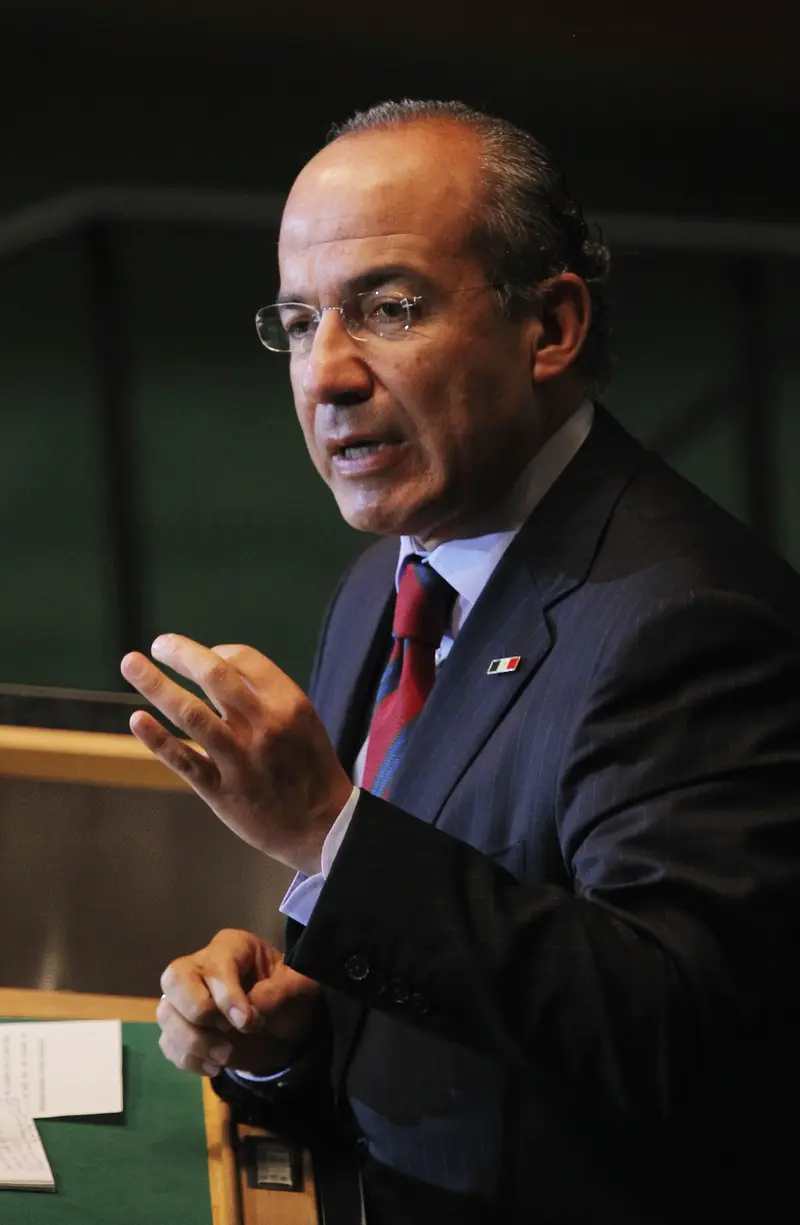
Credit:
Mario Tama/Getty Images
But, as some foreign policy and Justice Department officials saw it, the proposal could hardly be more fraught with peril for the U.S. relationship with Mexico. “A sting operation against the leading presidential candidate, who is also the arch-rival of the sitting president?” one former senior U.S. diplomat asked rhetorically. “Are you kidding me?”
A former Justice Department official familiar with the debate added: “You’re not in a situation where you can put an agent in there, so you’re dealing exclusively with people who are informants and criminals. It’s not just about the target of the investigation — it’s about what you’re proposing to do.”
Despite Calderón’s strong partnership with the United States and a flurry of strikes against major traffickers including the Beltrán Leyva gang, the potential for things to go catastrophically wrong in the two countries’ relationship was already on public display.
For months, a major scandal had been raging over a long-running effort by the Bureau of Alcohol, Tobacco, Firearms and Explosives to secretly track illegal U.S. guns going into Mexico. Hundreds of guns had been allowed to move freely to the trafficking gangs and other criminals, but the tracking had failed miserably. When the guns were identified from crimes or seizures, it was determined that they had been used in the killings of more than 150 Mexican citizens. The Mexican people, including Calderón, were furious.
“You have to have a long view about the relationship and the costs,” the Justice Department official said. “Not just the foreign policy concerns of other agencies, but also to DOJ. I had 10 other prosecutors who had cases that depended on working with (the Mexican government). And they were going to be really angry if this blew up.”
On Oct. 1, 2013, with no further prospects for the DEA investigation, Soto returned secretly to federal court in Manhattan to be sentenced on the cocaine-conspiracy charge to which he had pleaded guilty almost three years earlier, officials said. With the prosecutors’ endorsement, a judge gave him five years’ probation but did not require him to report back in person.
He flew home almost immediately, officials said, and went back to work in the Mexico City government.

